In Choosing a Filter Part I, I explained the basic function of a filter and how it works to reduce waste products in the tank.
There are a number of types of filters that do this basic function many different ways, which I will now explore.
Choosing a filter is really a matter of personal preference. Each filter has it's pluses and minuses, and different people will like different ones for different reasons. I'll break down what I think the strengths and weaknesses of basic filter types are (mainly depends on your tank size and what you want to keep in it), but this is often a matter of opinion:
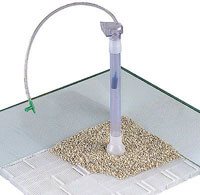
A very low maintenance means of relatively natural filtration. The idea is to provide indirect water flow through the plates, as water displaces the air bubbles pumped in through the sides. The filter plates provide a large surface area which is kept oxygenated by constant flow, harboring large numbers of beneficial aerobic bacteria in the substrate itself. This is great in theory for slightly understocked tanks, and in my opinion, they are excellent for these purposes... however, in practice, many people keep either borderline or overstocked tanks. Since the UGF provides NO mechanical filtration (only biological), it should not be used alone for well-stocked tanks.
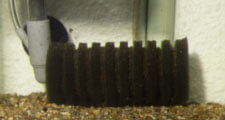
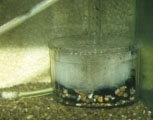
These are filters, which again, only work by water displacement (air powered), not by a direct water pump, and so they too have no mechanical filtration capabilities, they only provide a large, aerated surface area for bacteria to grow and thrive. Best used as supplemental filters or a filter for a fry tank (since there is no danger of sucking up baby fish).
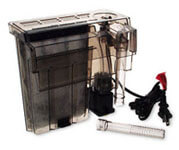
These are often the classic filters that most people think of, and come in a variety of shapes and sizes. They mostly work with a magnetic impeller which turns like a fan and pumps water through floss-covered filter plates, which can also contain carbon and other substrates (giving them both biological and mechanical filtration capabilities).
Some will also have a Bio-Wheel, an innovative and relatively new invention which allows for a separate area where "good" bacteria can grow, without having their entire populations dessimated every time the filter cartridge is changed. The advantages of the HOB power filters are mostly that the cartridges can be changed very easily for regular maintenance. Also, they come in a range of sizes to match different tanks, and are usually relatively inexpensive.
Drawbacks include that they sometimes become clogged if regular maintenance and cleanings are not performed. I would recommend them mostly for small to medium sized (5-50 gallon) tanks.
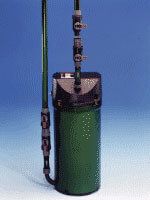
These filters are larger and a little more imposing to use. They are more expensive, but the advantages are that they can pump a large volume of water per minute, and so have both massive biological and mechanical filtration capabilities. They can also be used with a large assortment of media, most of which are highly porous (providing surface area for bacteria to grow). They don't need to be maintained as often as the HOB filter, but it's a trade-off, because when they do need to be cleaned out and have their media changed, it can be a project to work with the tubes and valves. Due to their high flow rates, they are not for smaller tanks, but will work very well in large tanks 40 gallons and up.